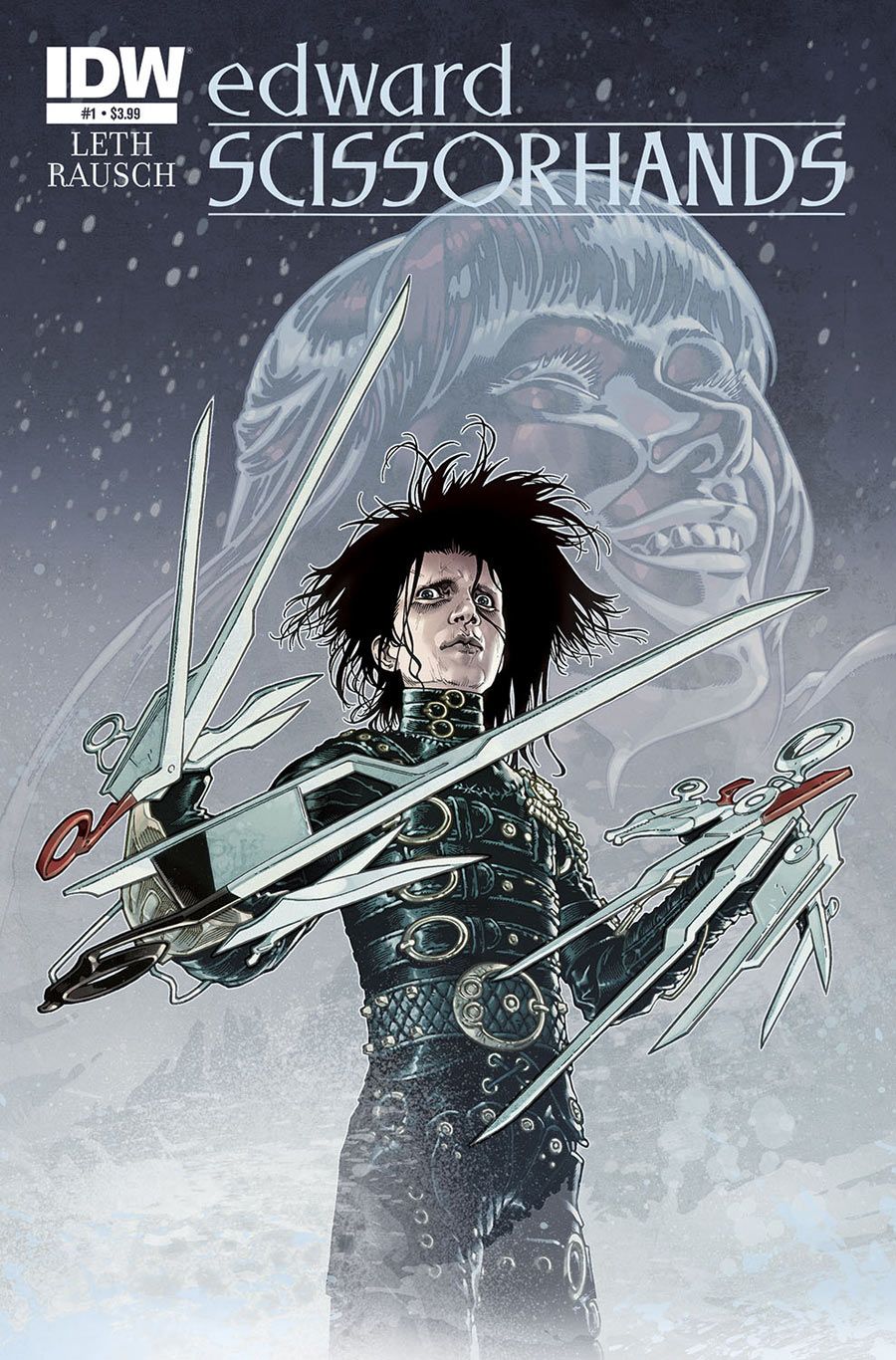Nearly a quarter-century after Tim Burton's dark-yet-delightful fable opened in theaters, "Edward Scissorhands" returns in comic book form from writer Kate Leth and artist Drew Rausch. Set a half-century after the film, the artificial construct Edward remains secluded in the old mansion on the top of the hill and his existence has largely been forgotten by the town below, save for Megan, the granddaughter of the woman he once loved, who is enamored with the stories of Edward told to her by her grandmother before her passing.
Of course, Megan's mother remembers Kim's stories too, and is quick to dismiss these stories, and Kim herself, as crazy. In establishing this mindset, Leth effectively picks up on the heart wrenching and somber mood that dominated the ending of the film created by the townsfolk's collective misunderstanding of Edward's past actions. Just as Kim's feelings for Edward belied her town's increasing distrust in him, Leth evokes a similar kind of sad dichotomy here with Megan's thirst for more knowledge of him amidst a new generation of folks who have forgotten all about Edward Scissorhands, if they ever remembered him at all.
Before readers even meet Megan, though, they first get to get reacquainted with Edward, who stays connected with the outside world by means of newspaper delivery and is therefore aware of Kim's passing. It's a clever trick by Leth and Rausch that gives the story a sense of timelessness; even though fifty years have passed, little seems to have changed, neither at the mansion nor in the town; there are no flying cars or jetpacks or social media to be found. It's an appropriate trick for a story that has such a fairytale-like setting. Rausch even ensures that the old newspaper clippings tacked to the walls look pristine and white, highlighting both the timeless feel and subtly conveying that, for Edward, the events that drove him back into isolation might as well have been yesterday.
Rausch brings a very oblique and distorted look to the entirety of the issue that provides a delightfully fitting interpretation of Edward and his dark and isolating surroundings. Edward and everything around him looks like it came straight out of Tim Burton's mind; Edward's hair is impossibly yet appropriately skewed and exaggerated, the stairs and windows of the mansion are all bent and twisted, and the shrubbery hand-crafted by Edward looks like it could come to life at any moment. The issue almost seems to come across as a truer and unfiltered adaptation of Burton's concepts that simply aren't possible in a live action movie.
Those looking for a more faithful rendering of the character need look no further than the issue's standard cover as beautifully drawn by Gabriel Rodriguez, which pays tribute to one of the movie's most beautiful and memorable scenes.
Leth furthers the story when Edward makes a discovery that brings forth a new and even darker dynamic for the storyline. It's an almost disturbing addition but one that stands to enhance the mythos where explored further next issue. A generation later, "Edward Scissorhands" #1 is a welcome and respectful return of one of Burton's more beloved creations, and manages to capture the same kind of emotional conflict that the movie did so well.

